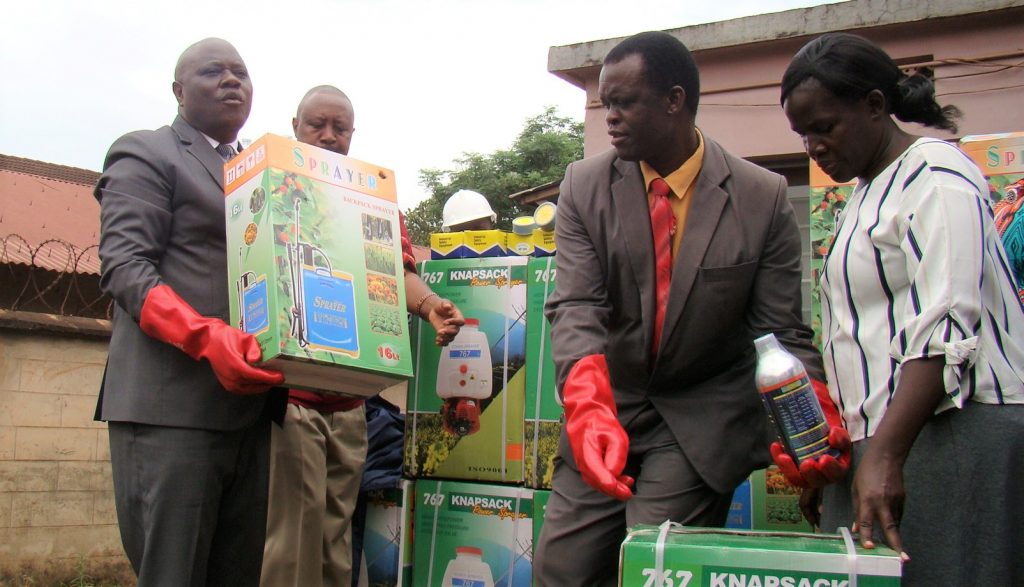Have you ever heard of the sweet potato butterfly caterpillar?
Uganda has been attacked by the sweet potato butterfly caterpillar (acraea acerata) which attacks sweet potato vines. The State Minister for Agriculture Henry Bagiire has distributed over 200 spray pumps to 9 districts that are affected with the outbreak of sweet potato butterfly caterpillars in a bid to control its spread. The districts include, Luuka, Iganga, Pallisa ,Bugiri ,Jinja Kamuli,Bukedea ,Budaka and Namutumba.
The Minister and Mr. Stephen Byantwale the Commissioner for Crop Inspection are visiting the districts informing the public about the best ways of controlling the Sweet Potato Butterfly Caterpillar.

A. acerata is a production limitation in some localities of Eastern Africa. Outbreaks are irregular and seasonal and usually occur at the beginning of the dry season. Complete defoliation and/or repeated defoliation results in reduced production. The caterpillars feed on the leaves of sweet potato plants , generally working from the edge inward, and leaving only the midrib and main veins sometimes completely destroying the plant.
Young caterpillars hatch in large groups inside a nest formed of several leaves joined with a web. They feed on the upper leaf surface, and the leaves of the nest become brown and dried-up and covered with their excrement. Older larvae become solitary and feed at night, usually remaining on the soil during daylight.
Egg The pale-yellow eggs measure about 0.5 mm wide and 0.7 mm long, and are laid on the leaf surface in groups of several hundred.
Larva The mature larvae are greenish-black and covered with fleshy, branching spikes. Caterpillars reach a size of 20-24 mm before pupating.
Pupa The pupae are cream to blackish with brownish banding on the back, and measure 12-15 mm.
Adult The adult sweet potato butterfly has orange wings with brown margins. Wingspan is 30-40 mm.
A. acerata is found in all zones of sweet potato production in Eastern Africa, but is considered a constraint in relatively dry agroecological zones. Outbreaks are common in Rwanda.
Females lay eggs in batches of 70 to 500 eggs on both surfaces of the leaves. Development is temperature-dependent. The egg stage takes 5 to 10 days. The larva passes through five larval stages in 16 to 26 days. The larvae are concentrated in a protective webbing for the first 2 weeks after hatching. They then become solitary and hide from the sunlight on the ground during the day. For pupation the caterpillars crawl up the plant or any convenient support, such as tall grass or a wall bordering the sweet potato field. Here the pupa is suspended in a vertical position. The pupal stage takes 4 to 10 days.

Mechanical control – The traditional method of controlling outbreaks has been to handpick and destroy nests of young caterpillars. A limiting factor might be lack of labour.
Chemical control – Severe outbreaks might warrant the use of contact insecticides.
Cultural control – Intercropping sweet potato with onion and/or the silverleaf desmodium, Desmodium uncinatum, might reduce the number of eggs laid by the females on sweet potato.












